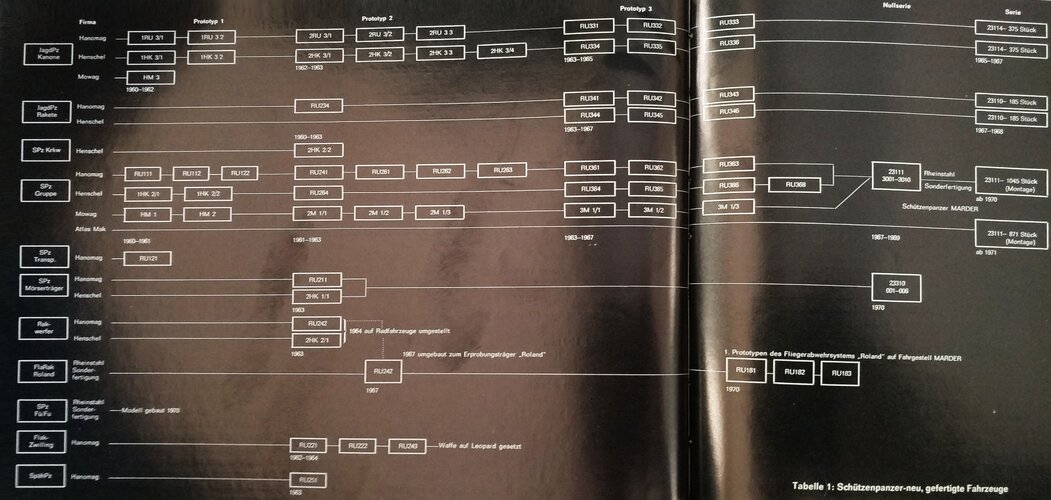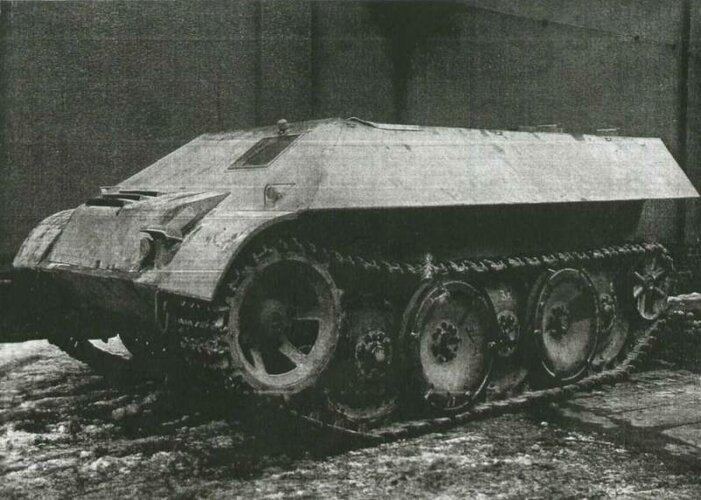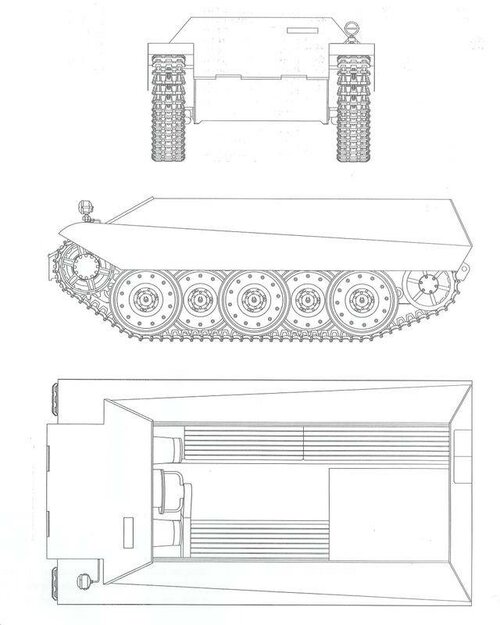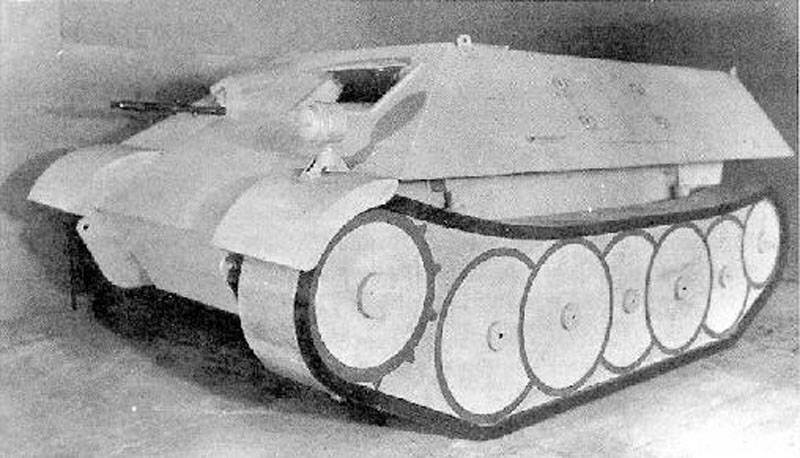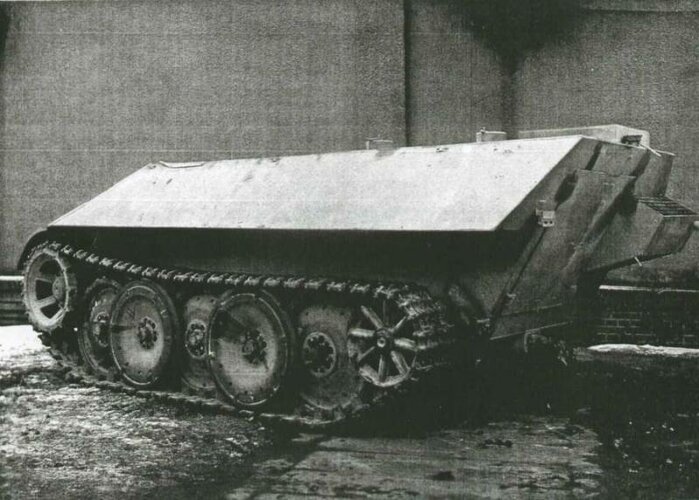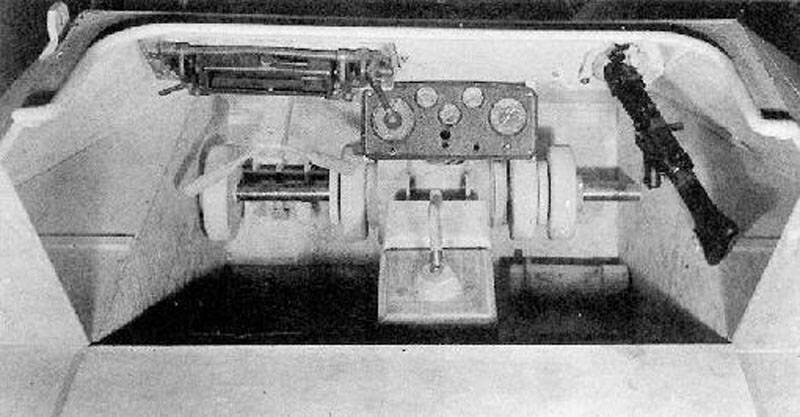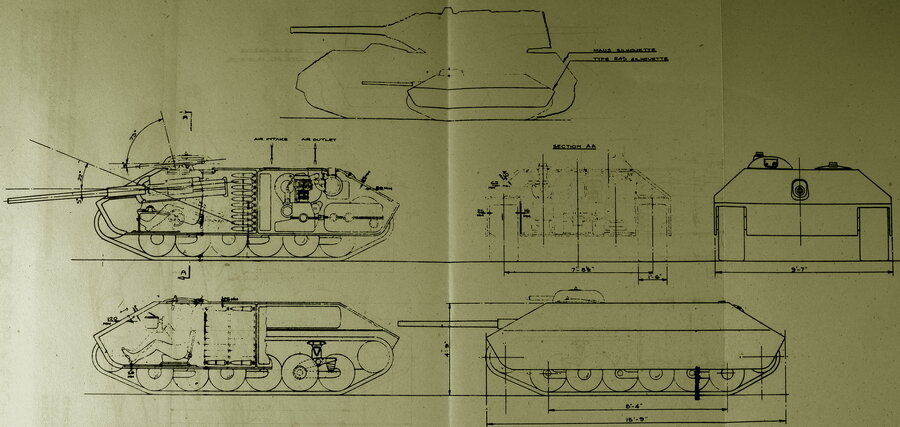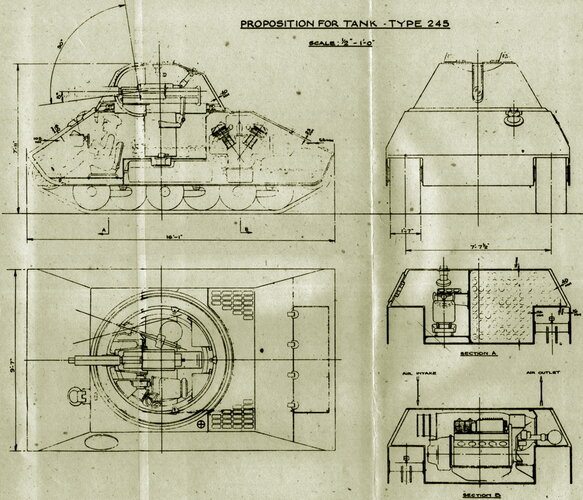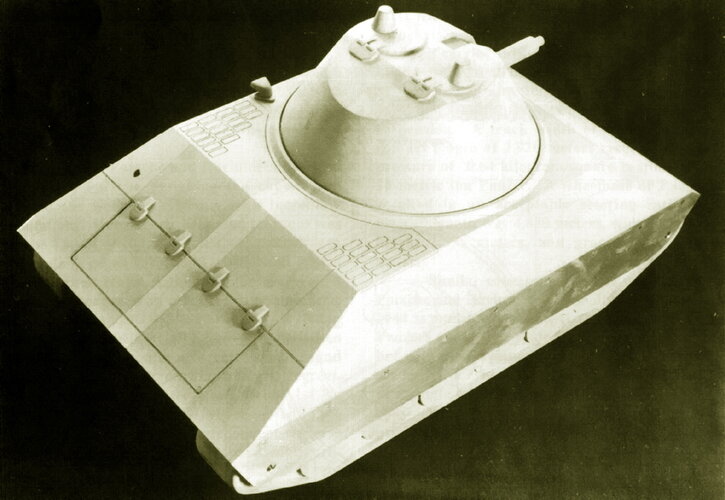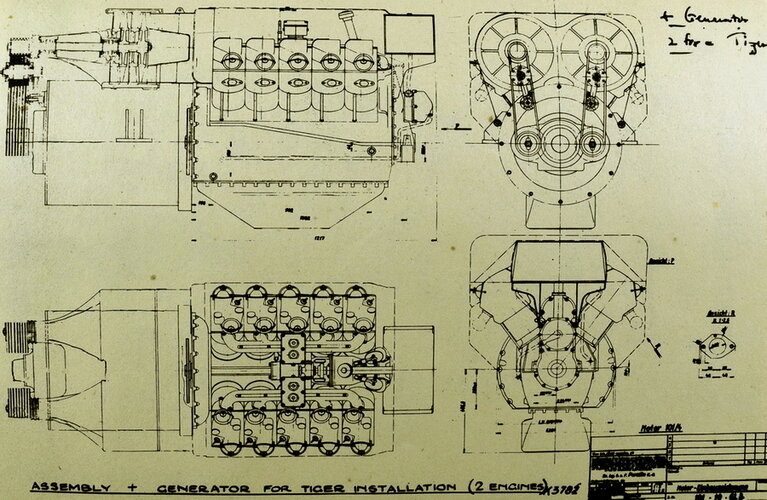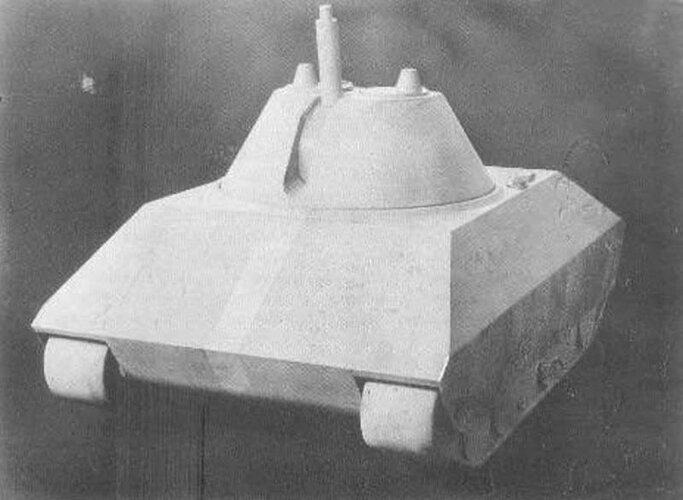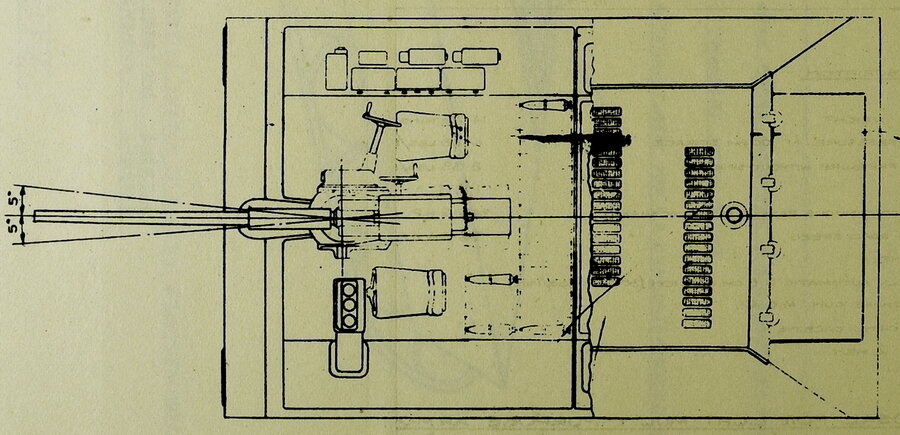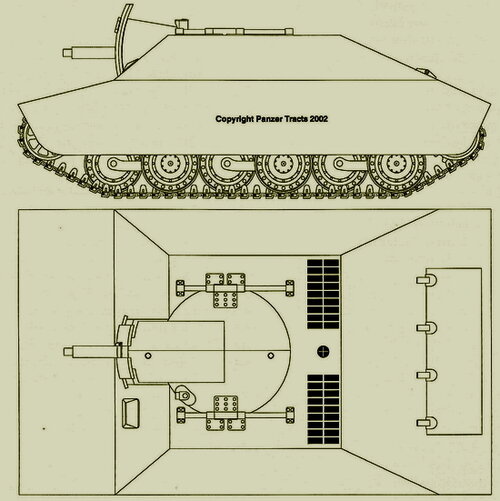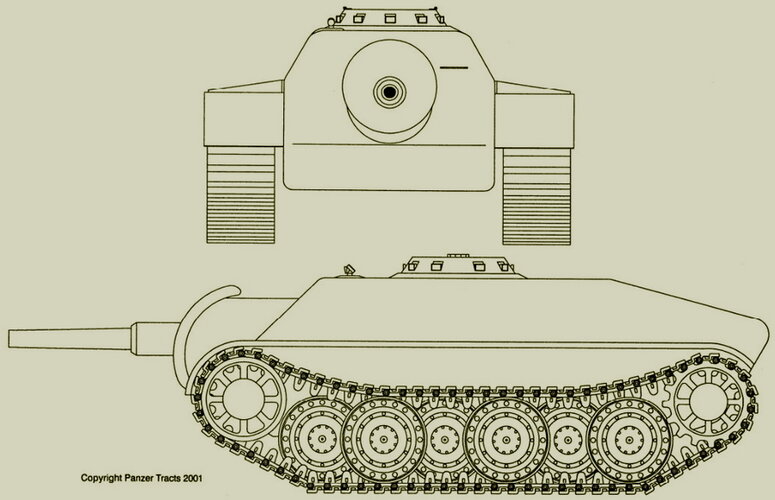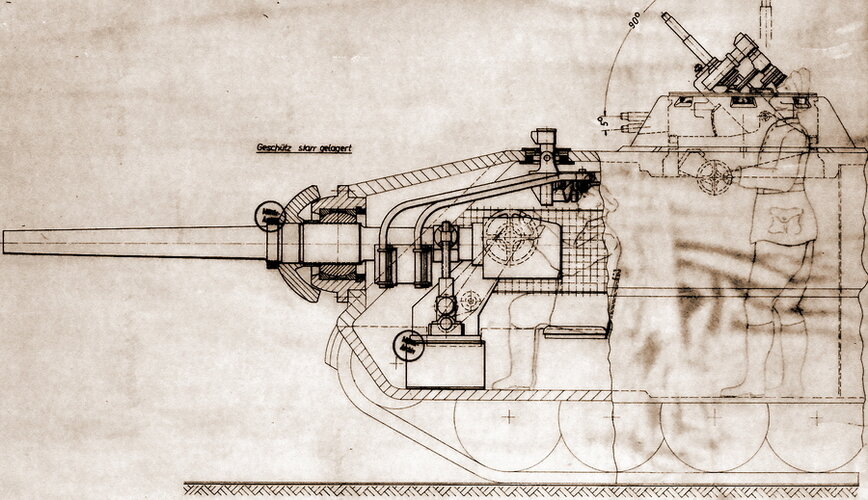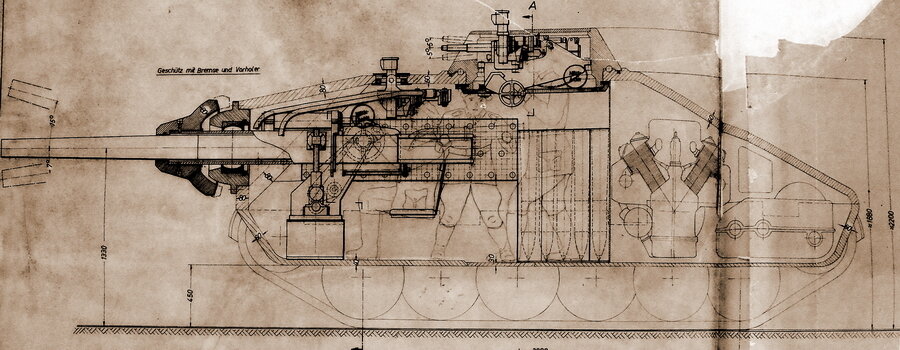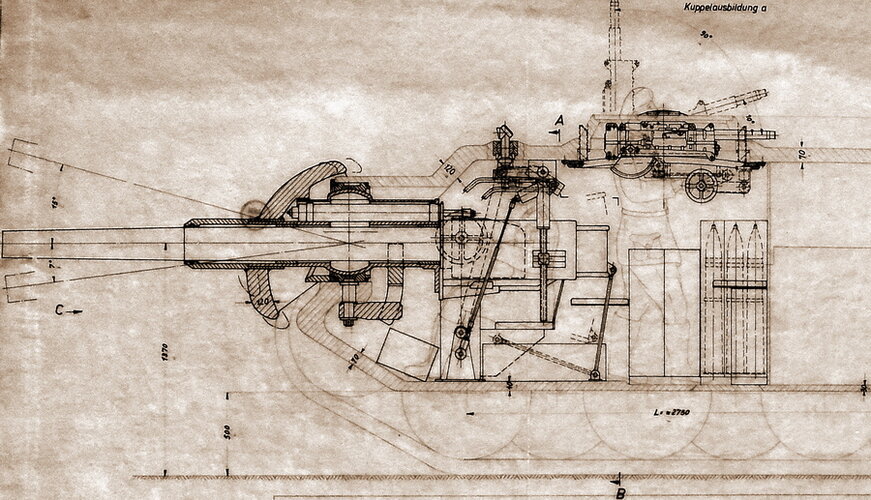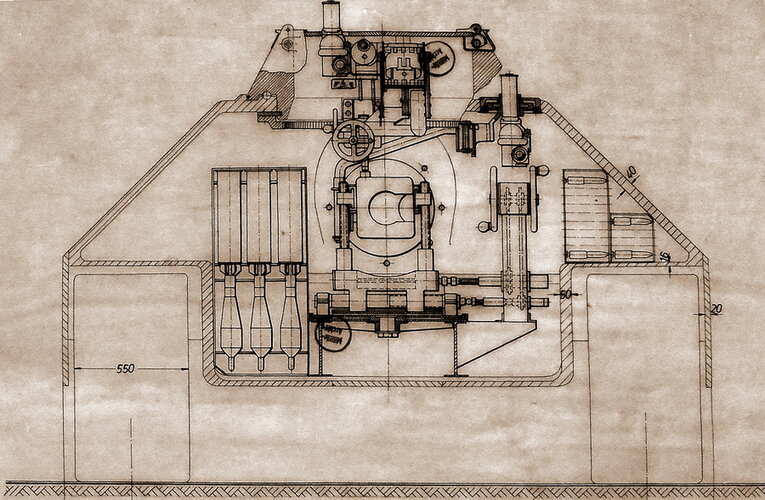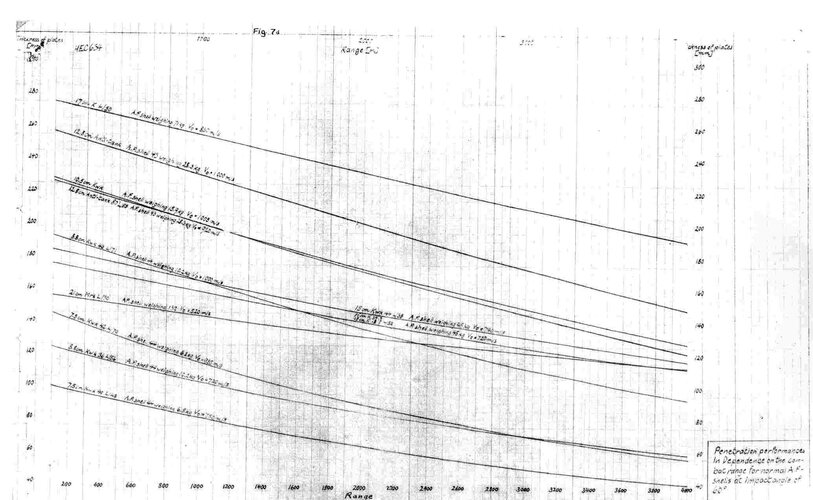I have no idea how accurate the content of this link is, and I am reliant on the google translation to understand its content, but if it is accurate it gives a level of detail on the E-50/75 that I have not seen before. I took away the following points (that I may have misunderstood):
Hull: The armour plates used the same angles as the E100, so the tank would have looked like a scaled E100 with a (newly designed) turret mounted forward, ahead of the rear mounted transmission, steering system and engine.
Transmission: A single integrated unit would have included the two final drives, the gearbox and steering mechanism, all inside the rear hull and behind the engine. This arrangement saved 1 ton of weight and reduced manufacturing hours by 25%. The E-50 was to have a top speed of 60kmh versus 40kmh for the E-75, the gearboxes would be identical with the change being achieved by replacing a single gear on each side.
Suspension: The well known Adler designed external suspension.
Engine: Maybach HL232, this used turbocharger powered by a 2 cylinder auxiliary engine that also served as a starter motor, it also used direct fuel injection instead of the carburettors used on the HL230. It was liquid cooled. Continuous power rating was 1,000hp but 1200hp could be achieved for short periods at 3200rpm. This was still in testing but the fuel injected HL234 was available in prototype form.
Turret: Krupp was designing the turrets, the E-50 and E-75 would have identical turret rings and both would use electric traverse, the weapons would be different though. [JFC speculation; they probably would have been similar to the Panther Aus F Schmalturm but designed round a wider turret ring and with a turret bustle for ready rounds, giving the appearance of a flat-topped (Henschel) Tiger II turret (also designed by Krupp).
The blog has lots of interesting articles, e.g.
this one about the PulsGetriebe PP33 designed for the Tiger

